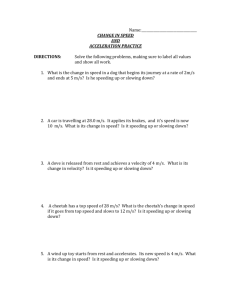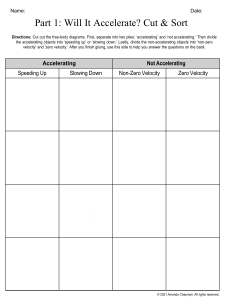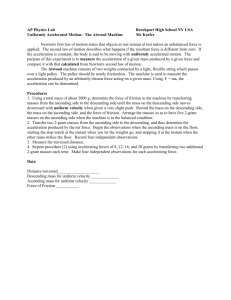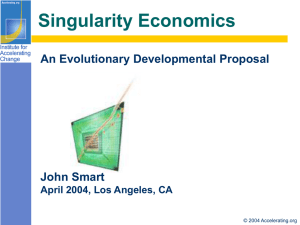Math Skills p
advertisement
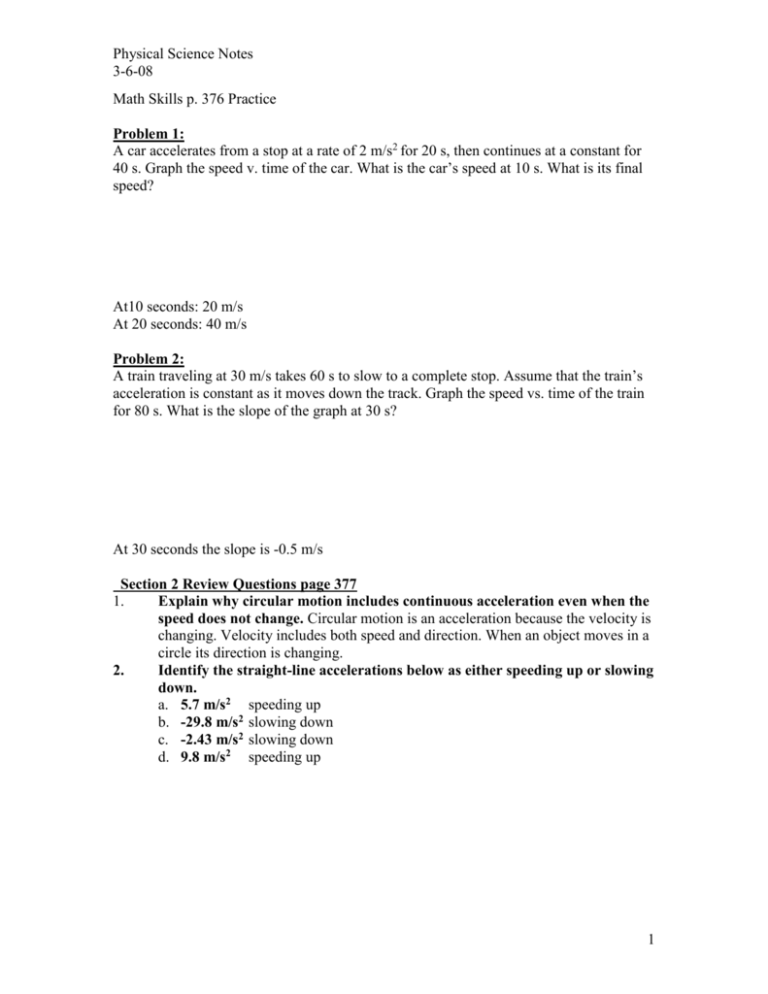
Physical Science Notes 3-6-08 Math Skills p. 376 Practice Problem 1: A car accelerates from a stop at a rate of 2 m/s2 for 20 s, then continues at a constant for 40 s. Graph the speed v. time of the car. What is the car’s speed at 10 s. What is its final speed? At10 seconds: 20 m/s At 20 seconds: 40 m/s Problem 2: A train traveling at 30 m/s takes 60 s to slow to a complete stop. Assume that the train’s acceleration is constant as it moves down the track. Graph the speed vs. time of the train for 80 s. What is the slope of the graph at 30 s? At 30 seconds the slope is -0.5 m/s Section 2 Review Questions page 377 1. Explain why circular motion includes continuous acceleration even when the speed does not change. Circular motion is an acceleration because the velocity is changing. Velocity includes both speed and direction. When an object moves in a circle its direction is changing. 2. Identify the straight-line accelerations below as either speeding up or slowing down. a. 5.7 m/s2 speeding up b. -29.8 m/s2 slowing down c. -2.43 m/s2 slowing down d. 9.8 m/s2 speeding up 1 Physical Science Notes 3-6-08 3. Graph the velocity vs. time from 0s to 10s of a care that accelerates from a standstill at a constant rate of 1.5 m/s2. 4. Joshua skates in a straight line at a constant speed for 1 min, then begins going in circles at the same rate of speed, and finally begins to increase speed. When is he accelerating? Explain your answer. He is accelerating when he is going in circles at the same rate of speed and when he is increasing speeds. One involves a change in direction and one involves a change in speed. Both speed and direction are a part of velocity, and any change of velocity is acceleration. What is the final speed of a skater who accelerates at a rate of 2.0 m/s2 from rest for 3.5 s? 3.5 sec x 2 m/s2 = 7.0 m/s Graph the velocity of a car accelerating at a uniform rate from 7.0 m/s to 12.0 m/s in 2.0 s. Calculate the acceleration. First subtract (12.0-7.0= 5.0) 5.0/2.0= 2.5 m/s2 is the acceleration. 5. 6. Examples of Acceleration: 1. An airplane taking off: it is increasing its speed and changing its direction when it lifts off the ground, so therefore the plane is accelerating. 2. A person walking 1.5 m/s along a winding path: The person’s speed is not changing, but the person’s direction is changing so therefore the person is accelerating. 3. A bicyclist stopping at a stop sign: the speed of the bicyclist is decreasing so the bicyclist is accelerating. 4. A car driving 88 km/h on a straight highway: Neither the speed nor the direction of the car are changing so the care is NOT accelerating. Force: an action exerted on the body in order to change the body’s state of rest or motion. Force has magnitude and direction. 2


